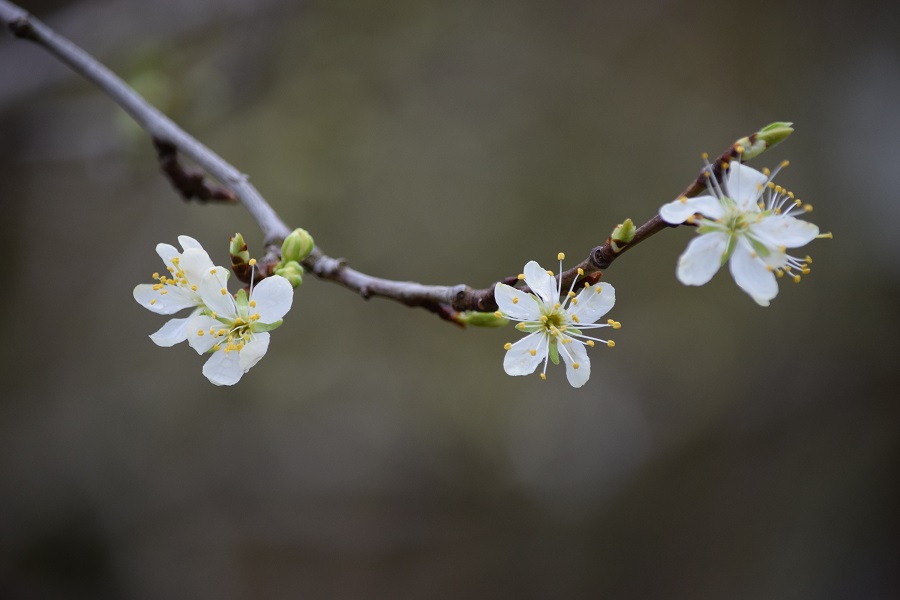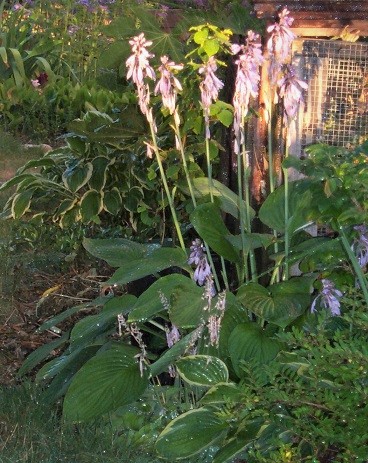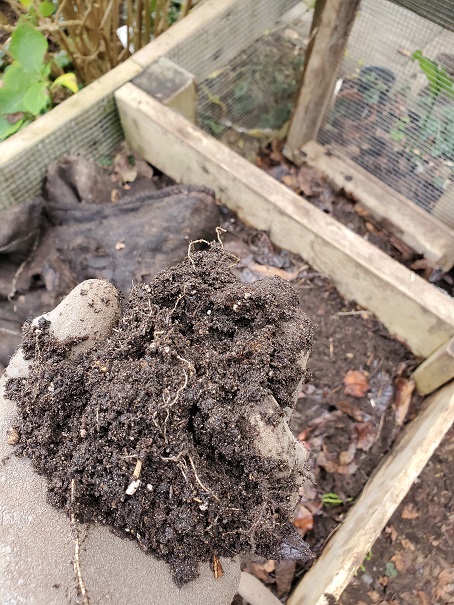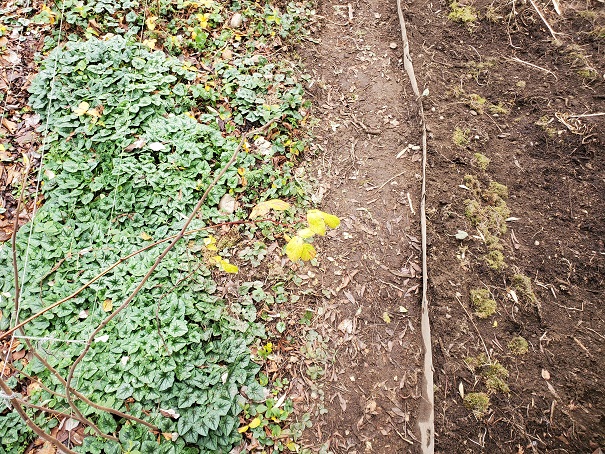On Sunday, I held the darkness of the earth in my hand. It was warm and comforting.
As a gardener, I hope for any day with weather fair enough. Sunday was one, with clear, still air and patches of blue sky. So I walked the yard looking for a good project, and found one.
The garden path felt like a tightrope, balancing me between fall and winter. On one side, slender raspberry canes nodded, leafless, as many months as possible from offering ripe fruit. Below them spread a carpet of hardy cyclamen, its leaves looking like concentric stacks of the ace of spades, colored two shades of green. On the path’s other side, the bed appeared as uneven, moss-covered soil, although I knew beneath the lumpy green surface lay an exuberance of spring, when the curled leaves of hosta would unfurl and lay over each other in a display that would be packed so tightly you wouldn’t see the stems of the plants.
There was my project. This time of year, on a day like that, spreading perennials beg to be divided. Lifting the plants, splitting their dense roots and replanting sections of them with spacing between can be both an act of renewal and of gifting.
A few weeks ago, knowing that my hosta task was upcoming, I offered to share some of those plants—three varieties of the genus that particularly please my eye—with a neighbor who will soon have need for plants. Her old plum tree, which has fed her family for many years and sent a delicate flowering branch over my side-yard path, will soon be removed.

Last year it lost a major limb, nearly a third of the tree, which split off when a “widowmaker” bough dropped from the nearby towering Douglas-fir. This year, the fruit tree produced more heavily than ever, and her early ripening Stanley plums were enjoyed up and down the street. But it might have been the tree’s last-ditch attempt at offspring, as another major split occurred in the old trunk shortly after harvest.
Plums will do that in old age, hollowing from within. Still, it was with tree-hugging sadness that the decision was made to take out the tree. It will happen soon. And when it does, my hosta divisions will be ready. The newly opened space that used to be shaded by a fruit tree canopy will become a bed of uplifting leaves, from which will spring reedy flower stalks with gentle buds at their tips.

Hostas favor a loamy soil, and when renovating an overgrown bed, you have to be suspicious about the tilth of the ground below. The matted roots could be preventing air and water infiltration, and if both are deficient, the soil biota could be low. In other words, the earth could use a little nudge to bring it back to life. So I turned to my compost bin.
My two-bin system squats conveniently next to the hosta bed. As I plunged my fork into one bin, I came back with only matted leaves. Tossed in during fall cleanup, they filled the bin more than three feet deep. In the other bin, tangled clippings from fall yardwork comprised the top foot or so, but below that, my fork hit density and came back black. A half-bin of finished compost waited beneath. So I began “turning” the compost, pulling out the leaves and mixing them back into one bin with the clippings, which would kickstart the decomposition process and contain the compostable material in just one side. That left the pile of finished compost in the other bin exposed and available for use. Ten buckets of rich, dark goodness came out of that side as I scraped until hitting dirt.

Homemade compost, consisting of cuttings and gatherings from throughout the yard, recycles much back into the soil. Those leaves, roots and twigs get chewed into a nutrient-rich humus, home to a universe of tiny creatures that some call the “soil foodweb.” They decompose organic material but then go on to live in the soil, or to die there and give up their bodies as further plant food. Fungi spread a web to interconnect soil particles. Earthworms aerate. Beneficial bacteria break down minerals and deliver them to plant roots. A multitude of creatures performs essential, intertwined roles. The soil breathes with life.
I laid the compost over the top of the bare hosta bed and then forked it in lightly, like tossing toppings into a salad. With the bed renewed, I began to split the hosta root clumps with two spades set back-to-back. Some of the smaller divisions got returned to the soil, carefully arranged with space for all to grow. Others were stockpiled in pots and covered with a protective layer of soil, to be used in my neighbor’s bed or another location.

Smaller plants like the disc-shaped tubers of cyclamen and the rooted rhizome lily-of-the-valley “pips” were tucked in around the edges of the bed, like slipping a sheet back under the mattress. Loosened chunks of moss were laid atop the bed in hopes they will re-establish themselves. A layer of woody chip mulch around them should help.

In the end, the bed looks much like it did before the work. But that is one of the lessons of the garden that is dug up when plunging a tool into the earth. The soil holds the roots of life, guarded beneath a dark veil.